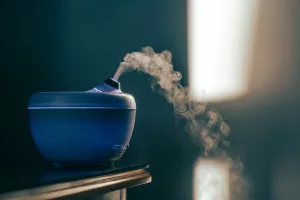When it comes to combating cold and flu symptoms, natural remedies such as herbal teas can be highly effective. Their soothing warmth, combined with various healing properties, makes them a go-to choice for many seeking relief. Let’s dive deeper into some of the best teas that can help prevent and alleviate the symptoms associated with colds and flu.
Echinacea Tea
Echinacea is renowned for its immune-boosting properties. This potent herb is packed with active substances that enhance the immune system’s ability to fend off pathogens. Drinking echinacea tea at the onset of cold symptoms can be particularly beneficial. For instance, a friend of mine swears by her routine of sipping echinacea tea whenever she feels a tickle in her throat. She claims that starting early often reduces her downtime by half.
How to Prepare Echinacea Tea
- Ingredients: Echinacea tea bag or 1-2 teaspoons of dried echinacea, boiling water.
- Instructions: Steep the echinacea in boiling water for 10-15 minutes, allowing the beneficial compounds to fully infuse.
- Tip: Enhance the flavor and benefits by adding a slice of lemon or a dash of honey.
Common Mistakes
- Overconsumption: While echinacea is beneficial, it’s important not to overdo it. Limit your intake to avoid potential side effects like nausea or dizziness.
- Incorrect Brewing Time: For maximum efficacy, ensure proper steeping time. Too short, and you might miss out on the benefits; too long, and it might become bitter.
Additional Benefits
Echinacea isn’t just for colds. Its immune-boosting prowess can also help reduce the duration of flu symptoms. Studies have shown that regular consumption can lower the chances of developing recurrent infections. In addition, it may also help with inflammation-related conditions, providing a holistic approach to wellness.
Ginger Tea
Ginger is a powerhouse of health benefits, particularly when battling colds. Its anti-inflammatory and antioxidant properties help soothe sore throats and reduce congestion. Personally, I find ginger tea invaluable during the colder months; its warm, spicy flavor feels like a hug in a cup.
Benefits Beyond Symptom Relief
- Digestive Aid: Ginger tea can settle an upset stomach and improve digestion, which can be particularly useful if your cold is accompanied by nausea.
- Circulation Booster: The warming nature of ginger helps improve circulation, which can enhance the body’s ability to fight off illness.
Making Ginger Tea
- Fresh Ginger Root: Peel and slice a 1-inch piece of fresh ginger.
- Boiling Water: Add the ginger slices to boiling water and simmer for 10 minutes.
- Optional Additions: Add honey or lemon for added taste and benefits.
Practical Tips
- For a more potent brew, grate the ginger instead of slicing it.
- Store fresh ginger in the freezer to extend its shelf life, ensuring you always have some on hand.
Additional Uses
Beyond its role in cold and flu relief, ginger tea is celebrated for its ability to alleviate menstrual discomfort and reduce muscle soreness. It’s also a great companion during travel to prevent motion sickness. Its ability to boost metabolism makes it a favorite among those looking to manage their weight naturally.
Peppermint Tea
Peppermint tea offers a refreshing way to tackle cold symptoms, especially those related to sinus congestion and headaches. Its natural menthol provides a cooling sensation, which can be incredibly soothing.
Why Peppermint?
- Antiviral Properties: Peppermint contains compounds that can fight off viruses, making it a great choice during flu season.
- Relaxation Aid: The aroma of peppermint can help relieve stress and promote relaxation, which is crucial for recovery.
Brewing Tips
- Use fresh peppermint leaves for a more vibrant flavor.
- Steep for 5-10 minutes to ensure the menthol fully infuses the water.
Case Study
Consider Jane, a busy mother of three, who relies on peppermint tea to manage her sinus congestion. She finds that a cup in the morning and evening helps keep her symptoms at bay, allowing her to maintain her hectic schedule.
More Than Just Relief
Peppermint tea is not only useful for colds. It also aids in digestion, making it an excellent choice after meals. If you suffer from irritable bowel syndrome (IBS), peppermint tea might help ease symptoms due to its antispasmodic properties. Additionally, its refreshing taste can help combat bad breath, making it a versatile addition to your tea collection.
Elderberry Tea
Elderberry is a staple in many natural remedy arsenals due to its rich antioxidant content. It’s often used to boost the immune system and reduce the severity and duration of colds and flu.
Nutritional Benefits
- Vitamins and Antioxidants: Elderberries are high in vitamin C, a critical nutrient for immune health.
- Anti-inflammatory: They help reduce inflammation, which can relieve symptoms like body aches.
Preparation and Use
- Dried Elderberries: Use 1 tablespoon of dried elderberries per cup of water.
- Simmer: Combine with water and simmer for 15-20 minutes.
- Strain and Serve: Sweeten with honey if desired.
Practical Advice
- Elderberry syrup is another popular form, often combined with honey for a potent, sweet remedy.
- Be cautious not to consume raw elderberries, as they can be toxic.
Expanding Its Role
Elderberry is not just for colds and flu. Its antiviral properties make it a valuable ally against other infections. Research suggests that elderberry may also support heart health by reducing cholesterol levels and improving circulation. Incorporating elderberry tea into your daily routine could provide year-round health benefits beyond the flu season.
Chamomile Tea
Chamomile tea is renowned for its calming properties, which are particularly beneficial when you’re feeling under the weather. It helps ease symptoms such as fever, headaches, and body aches, making it a versatile addition to your cold-fighting toolkit.
Sleep and Recovery
- Promotes Restful Sleep: Chamomile’s natural sedative effects can help ensure you get the rest you need for recovery.
- Stress Reduction: Reducing stress is vital for immune function, and chamomile’s calming effect can aid in this.
How to Brew
- Use one chamomile tea bag or 1-2 teaspoons of dried flowers.
- Steep in boiling water for 5-10 minutes.
- Enjoy before bed to maximize its calming effects.
Avoiding Common Pitfalls
- Ensure you’re using high-quality, organic chamomile to avoid pesticides.
- If you’re allergic to ragweed, use chamomile with caution as it can trigger allergies.
Beyond the Common Cold
Chamomile tea is often praised for its versatility beyond cold relief. Its anti-inflammatory properties can help with skin conditions and digestive issues. Furthermore, chamomile can act as a mild pain reliever, assisting with menstrual cramps and muscle spasms. Its gentle nature makes it suitable for children and those with sensitive systems.
Lemon and Honey Tea
A classic remedy, lemon and honey tea is not only delicious but also packed with benefits. The vitamin C in lemon boosts immunity, while honey soothes the throat and acts as a natural cough suppressant.
Key Benefits
- Hydration: Keeping hydrated is crucial, and this tea is an excellent way to ensure fluid intake.
- Nutrient Delivery: The combination delivers essential nutrients that support recovery.
Simple Recipe
- Ingredients: Juice of half a lemon, 1 tablespoon of honey, hot water.
- Mix: Combine the lemon juice and honey in a mug, add hot water, and stir.
Practical Tip
- For an added kick, consider adding a slice of fresh ginger or a sprinkle of cinnamon.
More Than Just a Cold Remedy
Lemon and honey tea isn’t just for colds. It can also aid digestion and help with weight management. Lemon’s citric acid can enhance digestive juices, while honey provides a quick energy boost. This tea can be a refreshing start to your day, providing a gentle detox and setting a positive tone for your morning routine.
Additional Teas and Tips
While the above are some of the most popular teas for colds and flu, there are others worth considering:
Green Tea
Green tea is rich in antioxidants and provides a gentle caffeine boost, which can be helpful when you’re feeling sluggish. Its catechins have been shown to enhance immune function.
- Preparation: Steep in hot, not boiling, water to avoid bitterness.
- Additional Benefit: Supports metabolism and may assist in weight management.
Turmeric Tea
Turmeric’s active compound, curcumin, has powerful anti-inflammatory effects. A warm cup of turmeric tea can help reduce inflammation and support overall health.
- Preparation Tip: Add a pinch of black pepper to increase curcumin absorption.
- Additional Benefit: May help improve brain function and lower the risk of heart disease.
Rooibos Tea
Caffeine-free and packed with antioxidants, rooibos tea can help soothe a sore throat and support the immune system.
- Preparation: Steep for 5-7 minutes for optimal flavor.
- Additional Benefit: May improve bone health due to its high mineral content.
Practical Tips for Tea Lovers
- Quality Matters: Always opt for high-quality, organic teas to ensure maximum health benefits.
- Stay Consistent: Incorporate these teas into your daily routine for ongoing support, not just when symptoms arise.
- Listen to Your Body: Everyone reacts differently, so pay attention to how your body responds to different teas.
- Combining Teas: Feel free to mix different teas to create custom blends that suit your taste and health needs.
By incorporating these teas into your daily routine, you can support your body’s natural defenses and promote faster recovery from colds and flu. Always remember to consult with a healthcare professional before using herbal remedies, especially if you have underlying health conditions or are pregnant. With a little preparation and the right selection of teas, you can navigate the cold and flu season with greater ease and comfort.



